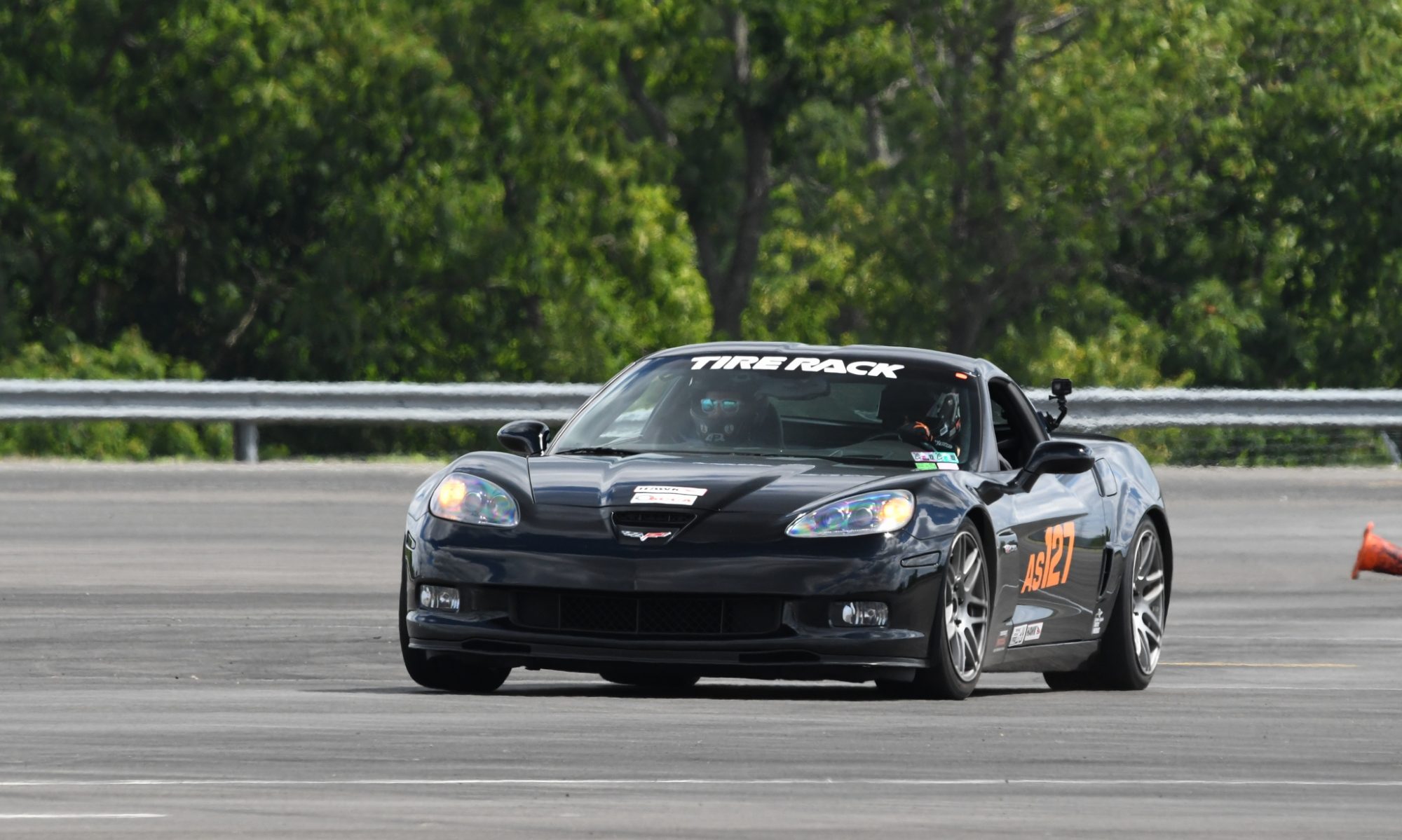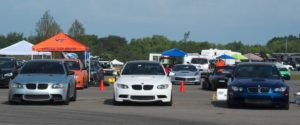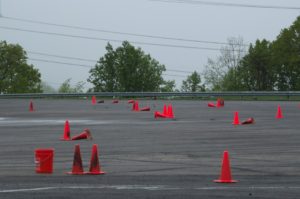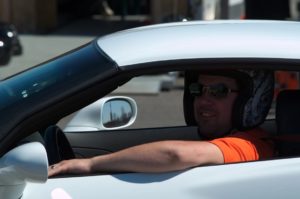Welcome to the Steel Cities Solo Virtual Drivers’ Meeting. This meeting is designed to give you all of the information you need to have fun at your event, whether you already know it or not. Reading, understanding, and following all elements of this meeting helps us save time and ramp up the fun factor by getting you in the driver’s seat sooner.
Following these simple instructions, guidelines, and tips will ensure that you are able to successfully (i.e., safely) participate in Steel Cities Solo. So take it seriously and take notes if you need to!
It is your responsibility to be 100% familiar with all of the elements of this drivers meeting in preparation for each event. If you stop reading and reviewing the meeting and commit an error because you forgot the guideline(s), the onus is on you.
- While in grid and paddock, keep up with your stuff, keep the drive lanes clear, and throw away trash. That includes the paper this may be printed on, if you’re reading it on site – though we would appreciate if you returned it so we could re-use it and reduce printing costs. Go green with STCsolo!©
- Most of all, remember, the paddock is a “no wake zone” so keep it low and slow (5 mph) until you are on course. This also means no tire warmups.
- Usually there is a traffic lane between part of our paddock and grid. Throughout the day, spectators, PittRace/safety vehicles, and other PittRace event participants drive through this lane to access the rest of the facility. If you are paddocked on the other side of this lane, do what you were taught long, long ago and look both ways before crossing the “street”, whether on foot or in your car.
- Unless you have a job that requires you to be in the timing trailer at any point of the day, please stay out. It can be a very hectic place, and even though it can offer shade and shelter, I can’t imagine anyone wanting to be in there unless they have to be.
- All spectators should remain in designated spectator areas only, which essentially means remaining on the other side of the guard rail or jersey barriers.
On Course – Driver
- Drivers and passengers must keep all body parts inside of the car. That means no
 holding onto the exterior of the door frame! Use the handle on the inside. That’s what it’s there for. Autocross.
holding onto the exterior of the door frame! Use the handle on the inside. That’s what it’s there for. Autocross. - Cameras must be securely mounted, and no handheld devices are permitted. Most of the time video looks slower than real-life anyway, especially when it’s taken vertically on a phone.
- If you spin, both feet in. Through the magic that is physics, pressing both the brake and clutch brings your car to a controlled stop – not the throttle. You are not Ken Block. Donuts are a bit unsafe with course workers around and they eat up time and hold everything up.
- If red flagged, stop your car and wait for course workers to let you know when it is safe to proceed. The moment they tell you to go, please do.
How to work a course:
- You should have the following at your worker station:
- Radio – for calling in penalties to drivers. This could include cone calls (see “Cone Calls”, below) or DNFs (“Did Not Finish”, i.e., driver going off course by passing a cone or cones on the incorrect side or bypassing an entire section or feature of the course).
- Red flag – for waving at drivers when it’s necessary for them to come to a stop on course. This could occur when the previous driver wiped out a section of the course and the workers weren’t able to repair in time, or if a previous driver spun and stalled, etc.
- Extra cones – sometimes cars eat cones. Literally. They are considered a delicacy. In the event that a passing car indulges itself, you must replace the ingested cones until the car fully digests them and deposits them elsewhere on the course or somewhere after the finish. In the event that a car chooses to just bang into a bunch of cones rather than eat them, and you determine that you won’t be able to retrieve and replace them in time for the next car, you may have enough time to just use the spare cones on hand to repair the course. But please don’t put your safety at risk in an attempt to repair the course in time. Seriously. It’s no big deal if the oncoming driver has to do a re-run because part of the course had been wiped out and was now missing. We would much rather have everybody safe, at all times.
- Fire extinguisher – if you find an explanation necessary here, please see a Worker Chief for an alternate work assignment.
- Once you arrive at your station, determine who will be the corner captain. This person will hold the radio and red flag at all times. If you are a novice, you cannot be a corner captain. Someday, though, someday . . .
- The corner captain must do a radio check with control (i.e., the trailer) before the start of the heat.
- If you are a novice, please let your corner captain know so that he or she can bring and keep you up to speed on working in your corner of the course.
- Course workers must remain standing and fully aware while cars are on course. This means no kneeling, sitting on the ground or leaning on guardrails, each other, etc.
- You should rotate your body and focus on the cones as the car passes by. If you notice a cone so much as wobble, you need to run and check it out. How do you check a cone? What counts for a penalty? Well . . .
- Cone Calls

-
- What counts as a penalty?
- Cone knocked over: +2s (i.e., 2 seconds added to the driver’s time).
- Cone remains upright but has been bumped out of its chalk box outline: +2s.
- What doesn’t count as a penalty?
- Cone remains upright and any part of the base is still within or touching the chalk box outline: no penalty.
- Hitting a pointer cone: no penalty (though you’re more than likely off course and a DNF).
- If you inspect a cone and find that it is still good (i.e., within or touching part of the chalk box outline), wave your arms across each other, low to the ground. This is the international signal for “no penalty”, and control will pick up on that.
- How to call in a penalty (radio dialogue should go like this):
- Worker station: “(Car number)(Car class), (# of cones knocked over or out of box) / (off course).”
- Some examples:
- “196 SM, 1 cone.”
- “12 DS, +1.” (In this context, +1 is another way of saying one cone knocked over, not +1 second added to time. If you say +1 to mean 1 cone, control will know what you’re talking about. It’s part of the autocrosser’s lexicon.)
- “88 STU, off course.”
- What counts as a penalty?
- For more info and tips on working the course, feel free to check out our own Mark Andy’s very insightful post on racepa: http://www.racepa.com/community/index.php?topic=553.0
Please feel free to read until you’re completely familiarized with all that’s been covered. We will still have an on-site drivers meeting before the event, though it can now be parsed down to the bare essentials and details that are particular to each specific event. All drivers are required to attend this meeting, as crucial information will be covered that isn’t included in this text.
Be safe out there and have fun!



